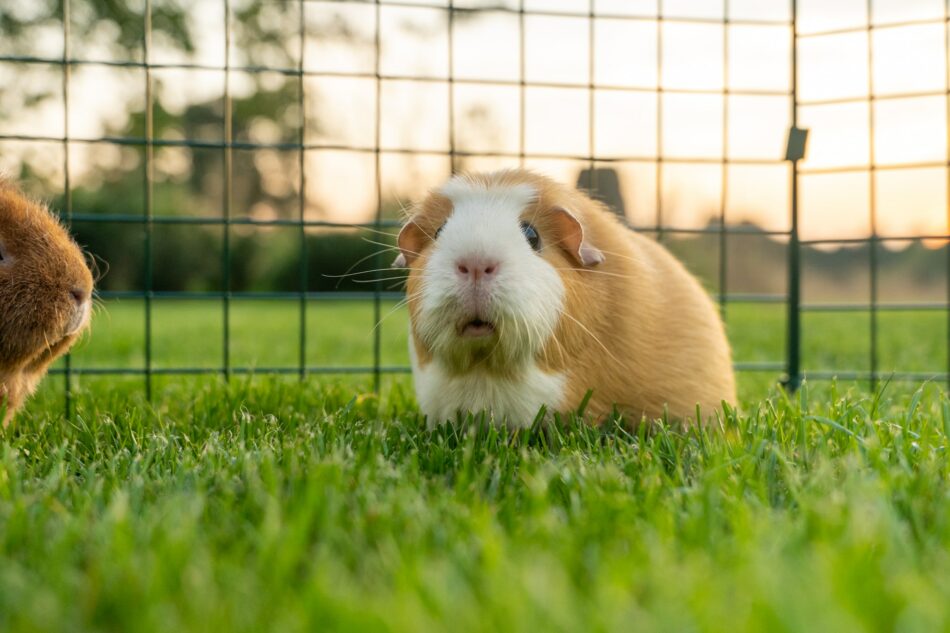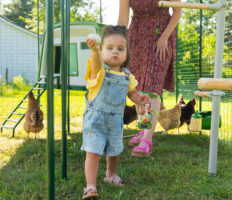Do guinea pigs moult?
Like many other pets, guinea pigs moult twice a year. This process of shedding their old coats and putting on a fresh coat for the season is natural, and may be more noticeable in some cavies than others. Find out if the fur you’re finding in your guinea pig’s home is part of this seasonal shed, or if the condition of your cavy’s coat points to something else.
Why do guinea pigs shed?
The seasonal shedding event is called “moulting,” and nearly all animals that have fur or feathers moult. Guinea pigs will typically moult twice a year: in the spring and early autumn. The spring shedding session is to prepare for the warmer weather ahead, while the autumnal moult allows guinea pigs to grow thicker fur for the winter. As the days grow longer or shorter and the temperatures begin to fluctuate, cavies are cued to start their seasonal transformations.
Outdoor guinea pigs may exhibit a more exaggerated shedding pattern, as they will take their cue to shed from the sun and the weather. It’s not unusual to see a lot of fur in your guinea pig’s hutch or run, and as long as you don’t notice bald patches, this hair loss is perfectly normal during a moult. With this rapid shedding and regrowing of fur, it should take your cavy between 2-6 weeks to complete a moult.
Indoor guinea pigs may shed more gradually throughout the year, as they aren’t exposed to as much sunlight or changes in temperature as their outdoor counterparts. This may make it seem like indoor cavies shed constantly – which is due to a very slow moulting cycle. Since they don’t feel the urgency that outdoor guinea pigs experience when growing a new coat, they will slowly shed old fur throughout the year, which results in daily shedding in small amounts.
Moulting takes a lot of energy, so you may see your guinea pigs sleeping more than usual. They may also be more hesitant or less tolerant of being handled. This is due to hair follicles putting pressure on their skin, which can cause minor discomfort. You may also notice your guinea pigs scratching or rubbing their coats along their hutch or run to help rid their coats of loose hair.
Do all guinea pigs shed?
Nearly all breeds of guinea pigs shed – except hairless varieties. You can usually tell by looking at your cavy’s natural coat how much they will shed. Guinea pigs with long or dense hair will have a more dramatic shedding pattern than short-haired breeds. Breeds that will typically have the most prominent shedding include:
Skinny pigs are a breed of hairless guinea pigs that will not moult, unless they have small tufts of fur. However, since they lack natural insulation, they should be kept in a climate-controlled setting to help them keep their body temperatures regulated. Skinny pigs aren’t good candidates to be outdoor cavies – except during temperate weather.
How to care for your cavies during heavy shedding
Caring for your cavies during a moult isn’t much different from their ordinary daily routine. But, there are a few things you can do to help them feel more comfortable and to reduce your guinea pigs’ shedding.
Grooming
Brushing your guinea pig can help control shedding by ridding their coat of loose hair. Fur that has been shed from the skin can cling to the surrounding coat and create an irritating buildup of more hair and debris. Since long-haired guinea pig breeds are more susceptible to matting under normal conditions, it’s especially important to brush them regularly while they’re moulting to prevent knots and mats from forming.
Grooming your guinea pig also gives you an opportunity to do a quick health check with them. While you brush your cavy, check for:
- Weight loss or gain
- Lumps or bumps
- Overgrown toenails or teeth
- Parasites in their coat
- Flaky or inflamed skin
- Discharge from their eyes, ears, or nose
Nutrition
Moulting takes extra energy, so nutrition is important while your cavy is growing in a new coat. Guinea pigs should always have constant access to timothy or orchard grass hay and a hay-based pellet diet. Since cavies can’t manufacture their own vitamin C, be sure their feed is fortified with this essential nutrient – which is also essential for a healthy hair coat. This is a necessary component of your guinea pig’s diet all year round, but is especially important during a moult to grow a healthy, vibrant new coat. Providing your piggies with a vitamin C supplement in addition to their regular feed during the moulting season is perfectly safe, so long as you don’t exceed levels of 100 mg/kg daily.
Fresh water should also be available at all times. If your guinea pig drinks from a crock, be sure to skim the shed hair from it daily. Water bottle nozzles may also catch loose hair that is blown around, and can clog or leak if the fur interferes with the stopper.
Environment
Keeping your guinea pig’s hutch and run clean and stress-free is essential to helping them through a moult. The Eglu Go Guinea Pig Hutch is easy to clean thoroughly in just minutes, and offers convenient access to your cavy’s food and water. The cosy interior offers solace from the outside world, as well as a comfortable place to relax during both hot and cold outdoor temperatures.
Giving your cavies extra space during heavy shedding minimizes stress and the amount of hair they may accidentally consume. An outdoor guinea pig run is a great way to let your cavies take advantage of fresh grass and sunshine, and allows for a breeze to carry the remnants of their discarded coats away.
Abnormal guinea pig shedding
Aside from the heavy shedding in spring and autumn, minimal shedding is to be expected from guinea pigs throughout the year. As long as there are no visible signs of distress or illness, routine hair loss isn’t concerning. However, be on the lookout for the following changes in your cavy’s coat:
- Red or flaky skin
- Bald patches
- Fleas or other visible parasites
- Excessive scratching or biting at their coat
If you notice your guinea pig has any of these symptoms, contact your veterinarian. Do not attempt to apply home remedies to your cavy’s coat, as many products that are safe for dogs or cats (or humans) are not compatible with guinea pigs.
Omlet and your guinea pig’s shed
We’re always creating ways to keep cavies and their keepers safe and happy all year round. When you house your guinea pigs in our Eglu Go Guinea Pig Hutch and Outdoor Guinea Pig Run, you can be sure that they’re enjoying their time outside to the fullest – even during a moult. No matter the season or scenario, our guinea pig products will lend the support and comfort that your cavies crave.
This entry was posted in Guinea Pigs





